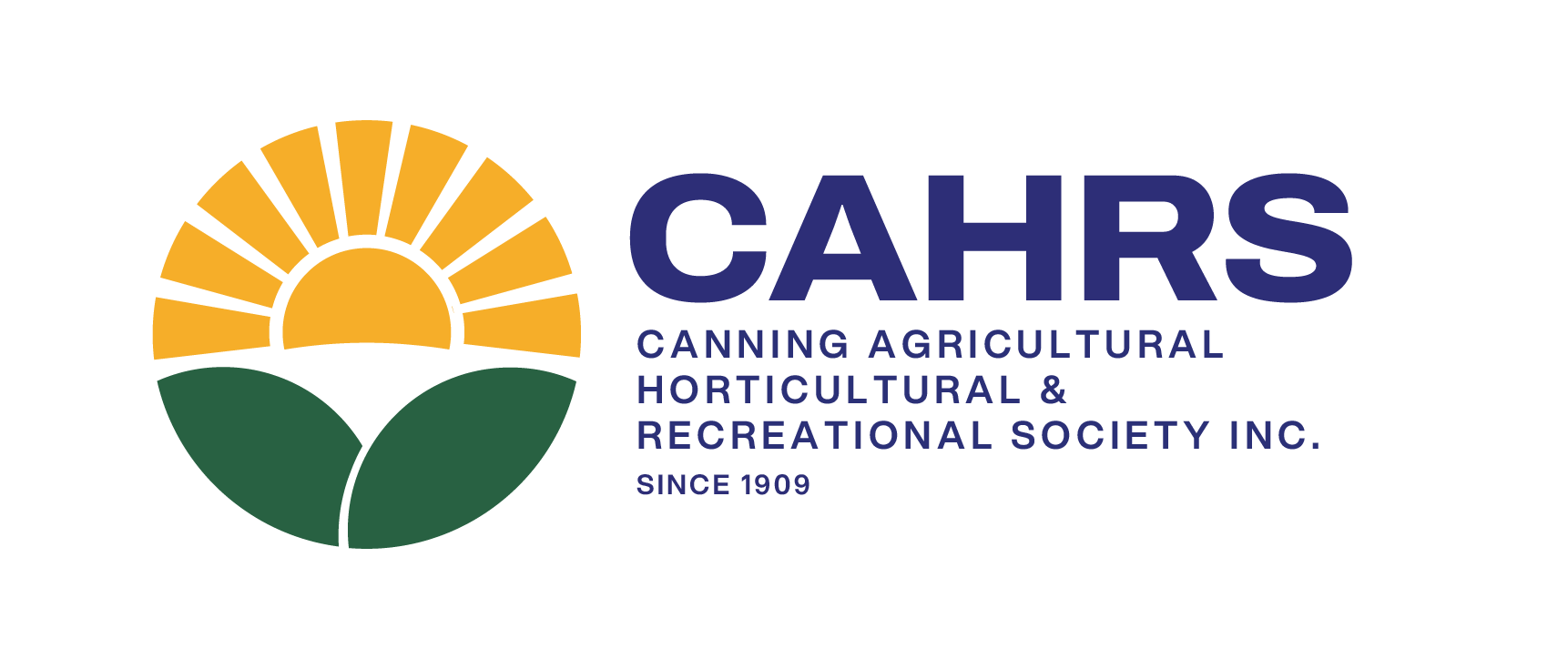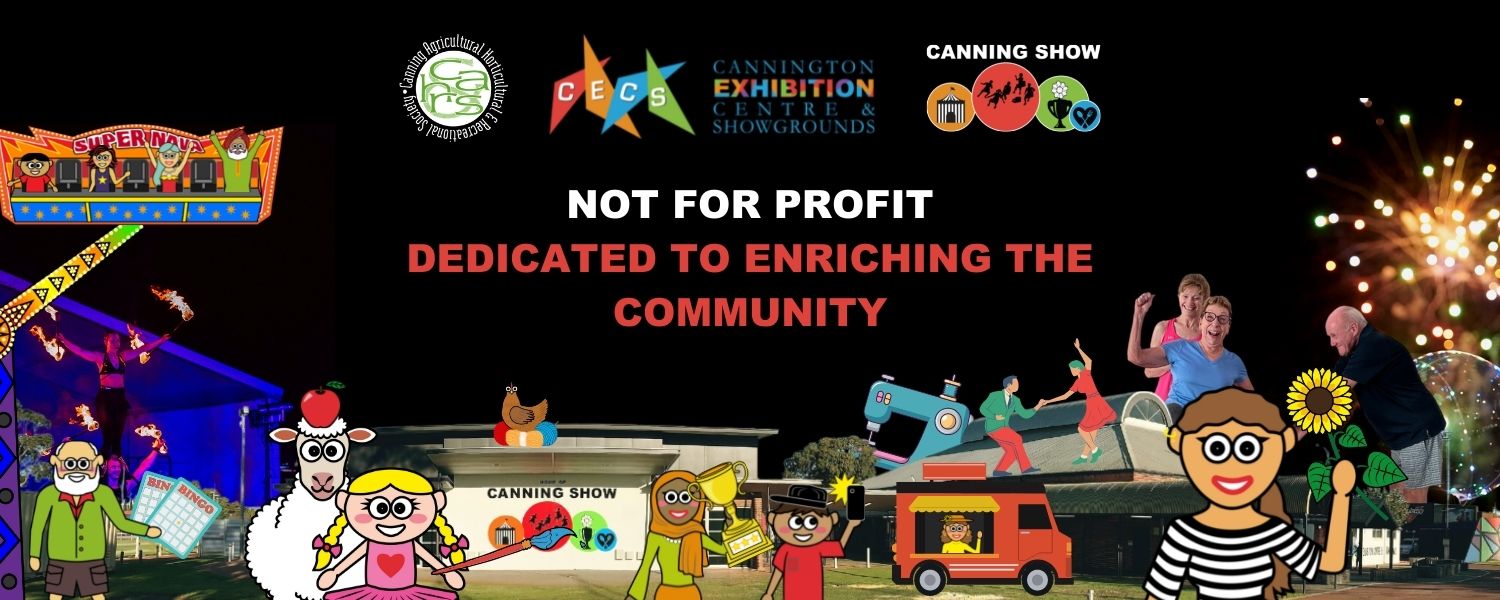A not-for-profit organisation dedicated to enriching the lives of our local and surrounding communities.
We provide platforms, activities and events that encourage participation in agricultural and horticultural interests, cultural and artistic pursuits, sport and recreational pastimes which enrich the community through the use of the resources of the Society.
We have around 450 diverse events, classes, workshops, expos etc held in our Cannington Exhibition Centre & Showgrounds each year.
The Canning Show is our key annual event, with approximately 15,000 people annually being entertained and inspired, including through the Exhibition, one of the largest in the state of its kind.
We also promote the development of agricultural, pastoral, horticultural, viticulture and industrial resources of Western Australia through a range of activities over the last 112 years, but are continually striving to adapt and reflect current changes, technologies and community interests.
A Chronology of Significant Events in the Life of CAHRS
1892 The first District Wildflower Show held.
1894 First Recorded Flower and Vegetable Show in Cannington.
1895 The State Government Forrest makes grant of £250 for an Agricultural Hall.
1896 Canning Road Board provides lot of land and calls tenders for hall building.
1898 The Agricultural Hall at the Corner of Albany Road and Station Street was opened.
1909 Canning Agricultura Society formed and affiliated with the Royal Agricultural Society of WA. First Agricultural Show held and opened by Lt. Governor Sir Edward Stone.
1913 Show day train transports exhibitors as far afield as Northam with free horse-drawn carriages.
Society secures nine acres at rear of hall site for £325.
1914 – 1916 Society plays major role in fund raising for Great War charities.
1915 West Australian newspaper reports “Show Outstanding – the spacious hall was filled with
products of the farm, dairy, garden and orchard, and with almost everything pertaining to the
domestic life of the settler”.
1922 Women’s Committee make a profit of £230 from a Baby Competition placing the Society
in the best financial position for many years, allowing further five blocks to be bought.
1926 Luncheon room, shed and tea room constructed. A cricket club formed by the Society and allowed to use hall and facilities.
1927 Minister for Works approves the transfer of the Hall Site deeds to the Society.
1930 Onset of Great Depression brought expansion to an end. Show entries down markedly.
1931 No Show held and Secretary’s Honorarium reduced from 7 to 5 guineas.
1933 Use of technology by public address system and advertising through radio.
1936 Dog Class introduced to add to usual livestock groups, flowers, fruit, honey, jam, bread, produce and school displays. The Show Dances after Show became formal balls.
1938 Additional overdraft of £300 used to add frontage façade to the hall. Grand Opening Ball.
1939 – 1945 World War II has wide ranging effect of the Society. Show profits donated to voluntary war organisations.
1947 President G.H. Wilson offers 21 acres of adjoining land to the Society. Purchased for £887 with 1-1/2 acres donated by Mr. Wilson.
1947 – 1953 The Shows grow in popularity with special trains running. Wine Class introduced.
By 1953 Show back to pre-war standard.
1950s Buildings in need of repair and improvement. R.&I. Bank asked for £10,000 but allows £ 2,500.
1960s Canning Show becomes a vibrant affair with family groups impeccably dressed.
The pony and trotting races, and equestrian events are well supported but membership declines as urban development takes hold and interest in rural activities fade.
1970 Trotting track well used by 100 trainers in area, approx. 400 horses being worked.
1974 Inaugural Greyhound race meeting on December 12 opens. The Showground is greatly improved to conduct annual Shows.
1976 Trotting training track re-established on adjacent land and licensed to South Suburban Trotting Training Centre.
Greyhound Association in financial trouble, Government conducts enquiry into industry.
1978 Society announces Plans for a Regional Centre for Sports, Social and Cultural activities. Name change to “Canning Agricultural, Horticultural and Recreational Society”
1981 Government Committee appointed to oversee greyhound industry from Cannington. State Treasury take over loan of $1.65 mill. Repayable by Society over 15 years. Rental income from the premises used to pay off the loan.
1984 With assistance of Town of Canning and Commonwealth Employment Scheme, an Exhibition Hall built on the showgrounds.
1985 W.A. Rugby League play at Cannington and build headquarters on premises for $165,000.
1991 Show attendance reaches 7,500.
1992 Albany Hwy widening encroaches on hall site. The Agricultural Hall is demolished and $210,000 compensation is received. Funds used to rebuild the Cyril Vickery Pavilion into Air Training Corp Flight Headquarters.
1993 Land exchange with Carousel Shopping Centre for Leigh Street road deviation. Lots fronting Albany Hwy purchased from City of Canning and transferred to Society.
1996 Loan for greyhound complex fully repaid allowing rental to be retained by the Society.
1998 Renovations to interior of the Exhibition Hall completed and hall promoted for community use.
1999 Architect prepares plans for a Music Shell and Office Building. Music Shell not undertaken due to objections about noise and instead The Liddelow Pavilion was built.
2001 The R.A. (Dick) Liddelow Pavilion and Society Office built and equipped for $1,225,000.
2009 The Society celebrates 100 years as an Incorporated Association.
2012 Cannington is now an urban centre. The Society introduces new ideas to encourage new attendance at the Show. A mascot is designed to create brand awareness, in conjunction with the slogan Canning Show ‘it’s Magic!’ The Society was also successful in a grant application to allow children free entry to the Show. A partnership was formed with neighbouring Shopping Centre Westfield Carousel to sponsor the Fireworks Display.
2013 The Events Calendar introduces an annual day out for members.
Members of the Committee formed a Men’s Shed on the grounds known as the Station Street Men’s Shed.
The Society brings out a headline act to close the Show improving attendance on the Saturday evening.
Greyhounds WA is granted a lease of 5.24 hectares to construct new facilities on Grey Street/Liege Street.
2014 Society accepts expression of interest from Bunnings Warehouse for a long-term lease.
By 2015 Exhibition spaces and showgrounds attract regular community hirers and reoccurring/annual events. The venue is used 500 times per year.
2015 Society Groups continue to grow in a healthy direction with the addition of a Mornings Craft Group and a Show Choir. The Show is planned on a smaller scale due to the demolition of the Greyhound Arena.
2016 The old greyhounds racing grandstand bowled over 24th January and the new Showgrounds were reconstructed and opened on 18th October.
2017 4th February Bunnings opened its doors.
2018 CAHRS invests over $500,000 to refurbish the Cannington Exhibition Hall.
2020 Record-breaking Canning Show with 12,501 attendees, going on to win ‘ Active Citizenship’ award in City of Canning Community Citizen Of The Year Awards.
2021 First-ever CAHRS Committee of Management female President, Maxine Wylie
2021 Canning Show breaks attendance / ticket records for the 3rd year in a row, with almost 16,000 people and a 97% happy punter rate firming it as one of WA’s premier community celebrations
2023 Cannington Exhibition Centre & Showgrounds expands, launching new venues Canning Agricultural Pavilion, Market Hall, and the new HQ for resident Australian Defence Force local cadet squadrons. Officially launched at Canning Show, which recorded record attendance approaching 20,000



